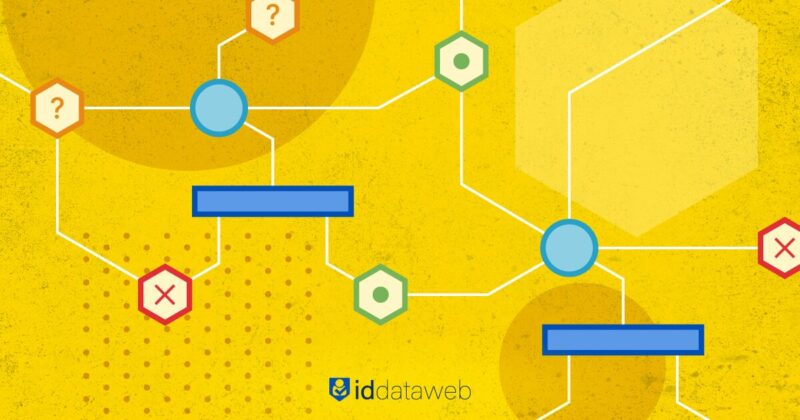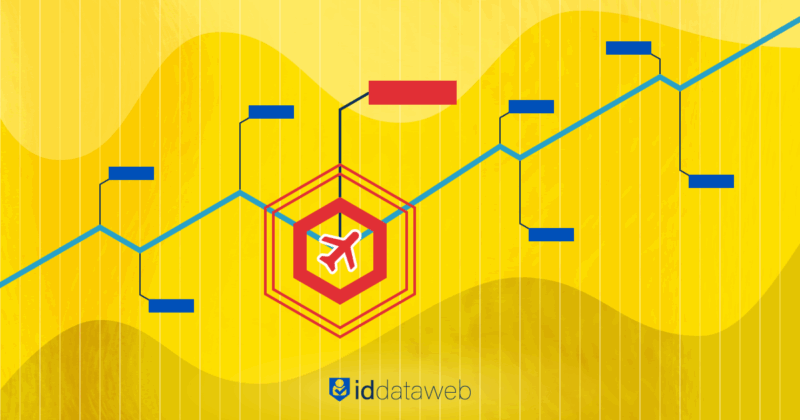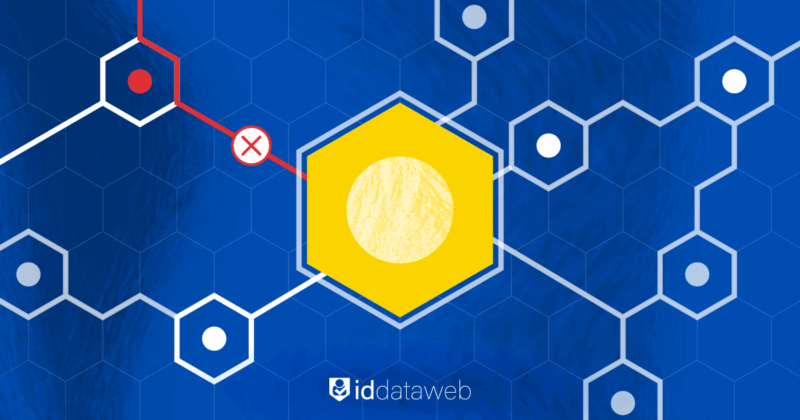Account takeovers (ATOs) are increasing every year. Attackers have better tools and more sophisticated tactics than ever before. They also have more patience. They bide their time and look for exploitable gaps, until they find a high-value opportunity.
Businesses that rely on static fraud rules or isolated authentication checks are at risk. They often do not see an attack until after it has caused real harm. Sometimes, workforce ATOs are subtle enough that attackers can dwell for weeks and months without notice.
Policy-based decision engines enable organizations to rapidly adapt their security measures and counter new fraud tactics. They absorb risk signals in real-time and provide a centralized way to reconfigure policies as bad actors pivot.
Read on to learn how a decision engine helps mitigate ATO in 2025. You will also see why rigid fraud controls often fail, and how ID Dataweb’s policy orchestration engine can transform your security posture.
Account Takeover Attacks in 2025
Modern fraud rings are run like enterprises. Some departments steal data, others handle counterfeit card production, and others manage bulk fishing to gather login credentials. A final group might monetize or resell the stolen information on black markets.
This corporate-like model means they can shift operations rapidly. If a region clamps down on them, they move on. If one channel becomes too risky, they pivot to a new angle. That might mean targeting another market or focusing on smaller transaction amounts. They do whatever works best at scale.
Financial institutions, for example, are a frequent target. Traditional credit card fraud is just one entry point. Mobile devices, e-commerce accounts, and loyalty programs all present attack vectors. Attackers steal these accounts to place unauthorized orders, drain stored value, or harvest personal data.
In 2025, these fraud rings are also more subtle. They try small-volume transactions to avoid triggering velocity rules. They IP-hop between countries to limit pattern detection. Their success depends on speed and agility. So enterprises need an equally agile approach to stay ahead.
Why static security measures fall short
Conventional, static rules-based systems are slow to adapt. They depend on rigid thresholds or manual updates. When a new fraud pattern emerges, teams scramble. They write a fresh rule. They push it through a dev cycle. By the time it is deployed, the criminals have taken their gains and moved on.
That delay creates expensive gaps in defense. Fraudsters exploit these windows to run up huge losses. Additionally, rigid rules often create friction. Large swaths of good customers get flagged by strict thresholds. This leads to frustrated users and a spike in support calls.
Static approaches also create data silos. One system might monitor device reputation. Another flags suspicious IP addresses. Yet another checks velocity or purchase amounts. These signals often do not align in real time to deliver a holistic picture. That is a big drawback when dealing with account takeover attempts that keep morphing.
Basic multi-factor authentication (MFA) is not enough, either. Criminals can harvest or bypass many forms of MFA by phishing or SMS swapping. Passwords alone are even more vulnerable.
The net result is that organizations spend heavily on security tools but still get caught off guard.
Decision engines, explained
A centralized policy and orchestration engine is able to ingest data from all your security inputs and leverage powerful attribute providers with globe-spanning fraud & identification databases. It can process signals like IP geolocation, device fingerprint, transaction velocity, carrier intelligence, and more. It then applies configured policies to decide whether to deploy additional verification challenges or block access to an account.
If the user behavior seems typical, the engine allows seamless access. If something looks off, the engine escalates. It can challenge the user with a second factor or block the request entirely. This happens in milliseconds, behind the scenes.
Security teams gain a central point of control. They can edit risk thresholds, add new rules, or combine signals without rewriting code. The system recalculates each time a new transaction arrives. That is how it adapts to evolving fraud tactics in near real time.
This approach preserves user experience. Most customers see little friction, with only high-risk attempts getting flagged.
Essential capabilities of a modern decision engine
A powerful decision engine checks many boxes. It has speed, flexibility, and provides actionable reporting. Let’s explore the most important features.
Flexible rulesets
Rulesets let you combine multiple signals, such as device info, IP reputation, transaction category, phone reputation, or user history. You can string them together to handle very specific scenarios. For example, maybe you want to block purchases over $50 at certain retailers if the phone number is newly ported. Or you may require extra authentication if the IP location is too far from the user’s usual location.
The best engines let you do this without coding. A no-code interface makes quick updates possible. Teams can respond immediately if fraudsters adjust. ID Dataweb provides pre-configured templates designed to counter known fraud tactics.
Real-time analytics and reporting
Data is gold. ID Dataweb’s real-time analytics let you see how each rule affects approvals and rejections. You can analyze approval rates. You can measure fraud outcomes. You can study the impact of policies on user experience.
A robust reporting dashboard also lets you identify false positives. Maybe a specific rule is snagging good customers. You can tweak that rule instantly and watch performance improve.
Actionable security decisions
An effective decision engine does not just say “risky.” It should be able to do something. That might be blocking the transaction, sending a notification, or routing the user to a heavier authentication step.
For instance, if the engine spots a known compromised device, it can automatically end the session. If the engine sees a modest risk, it might prompt for biometric verification. That is how you control the customer journey in real-time.
Spotlight: ID Dataweb’s policy orchestration engine
ID Dataweb takes the decision engine concept a step further. It offers a powerful policy orchestration engine that merges thousands of signals into one integrated platform.
You define the thresholds. You decide which signals to prioritize. ID Dataweb’s interface then orchestrates them seamlessly. It looks at device intelligence, phone reputation, and geolocation. It also tracks user behavior to spot anomalies.
The real power lies in how easy it is to adjust. No code changes. No big engineering lifts. If you detect a new fraud ring in Florida, you can add or refine a rule for that region right away. If the fraudsters then jump to Chicago, you extend your rule set instantly.
Even more compelling is how ID Dataweb focuses on user experience. You do not want to annoy every single customer with extra verification. Instead, the policy orchestration engine selectively applies friction.
For example, if a login comes from the user’s known device in a normal place, pass them right through. If an odd IP address and a brand-new phone appear, the engine can require a biometric check. That keeps honest customers happy. It also crushes criminals who rely on stolen data alone.
This orchestration also means you can see a full audit trail of decisions. You will know why a transaction was allowed, denied, or escalated. That is critical for compliance and for learning over time.
ID Dataweb can also integrate emerging signals. If there is a new identity provider or a new data source for device patterns, you can fold it in. The engine remains flexible. It can adapt in 2025, 2026, and beyond. You do not have to reinvent your security approach each year.
The ROI is clear. Fewer fraudulent transactions slip through. Fewer good customers get blocked. You spend less time chasing disputes or chargebacks. And you build trust with users who appreciate seamless security.
Secure your business now
Fraudsters constantly evolve. But you can stay steps ahead. An adaptive, data-driven decision engine is the key.
ID Dataweb’s policy orchestration engine merges real-time risk signals and dynamic authentication paths. It helps you defeat sophisticated threats, while giving genuine users a hassle-free experience. Ready to future-proof your defenses?
Contact ID Dataweb today for a personalized security consultation. See how easy policy orchestration can be. Discover how quickly you can adapt to new threats. Safeguard your customers and bottom line.










